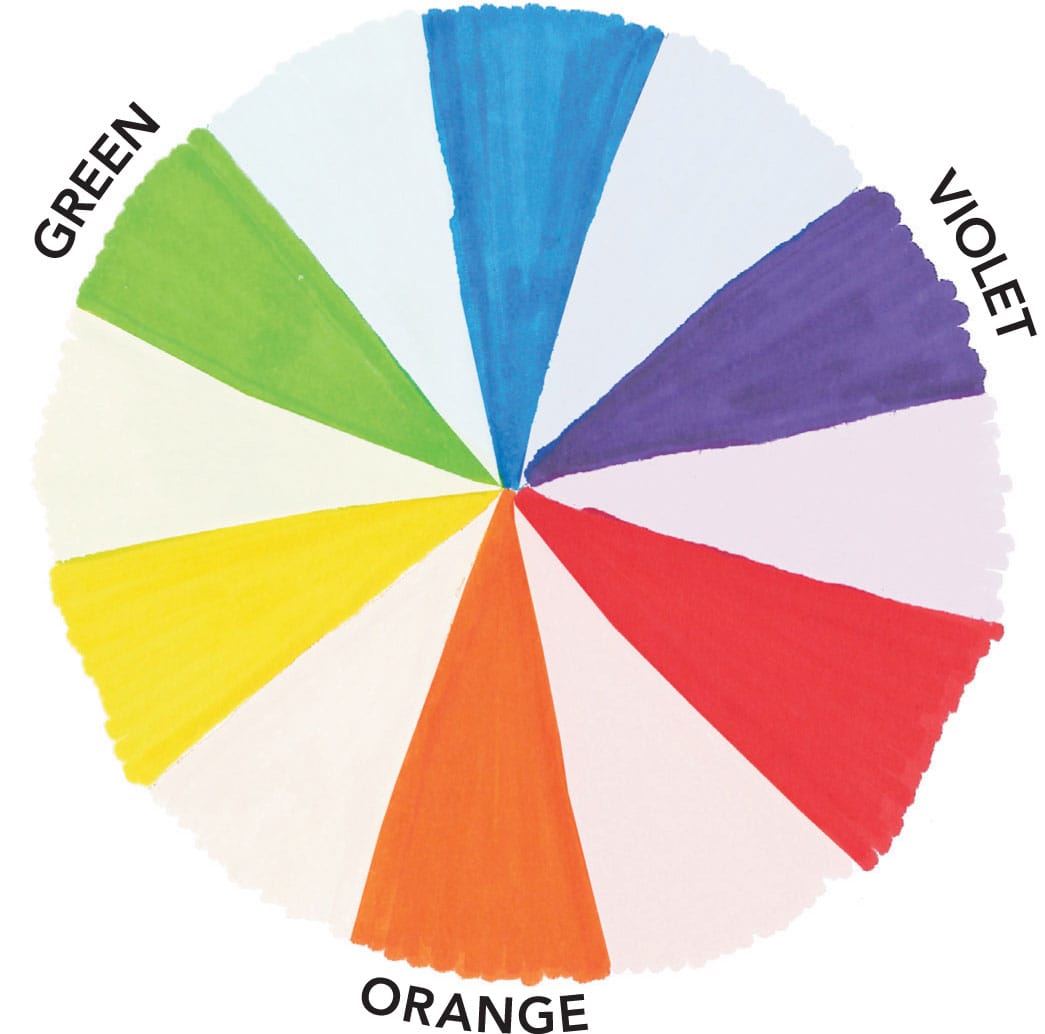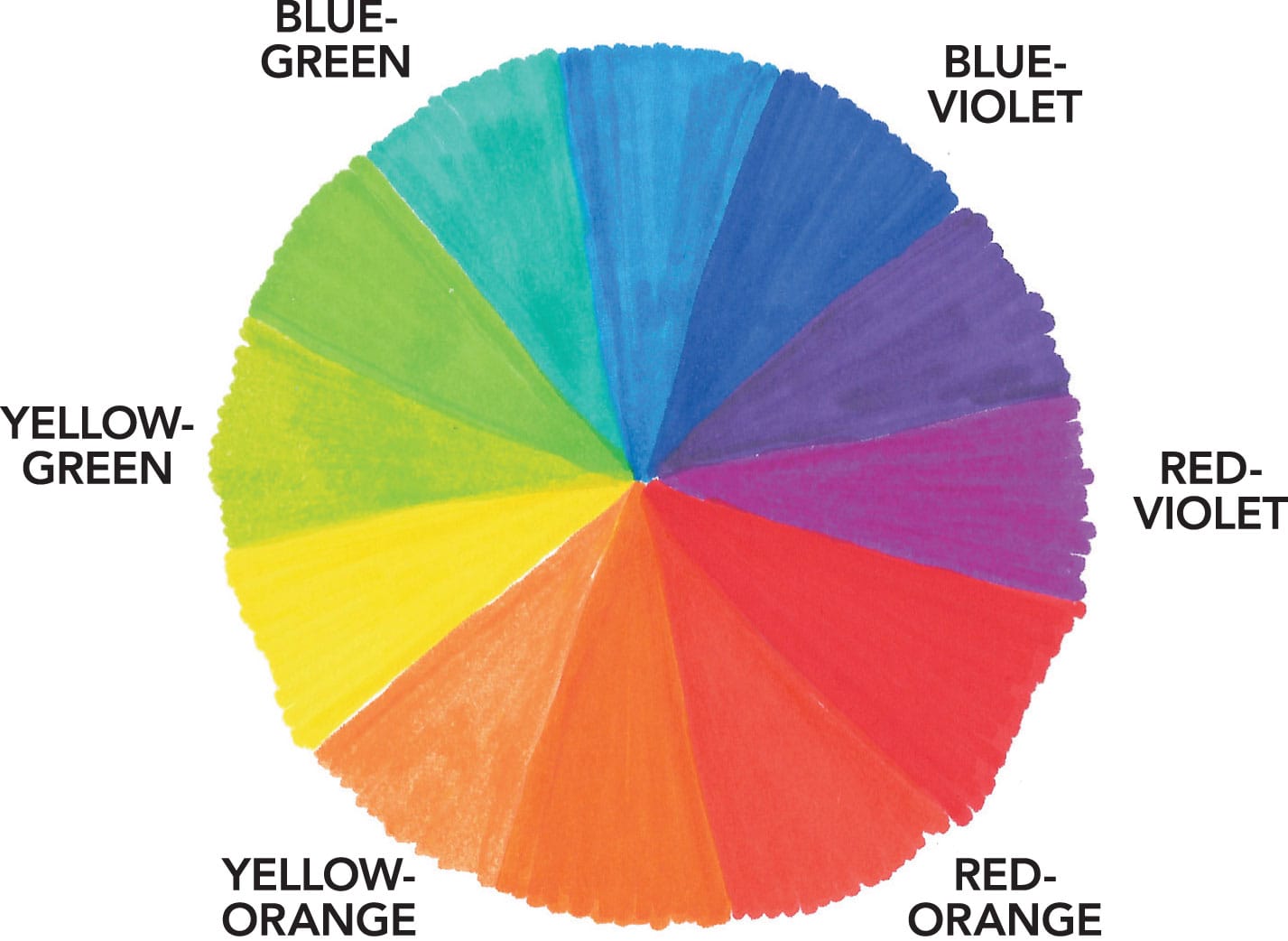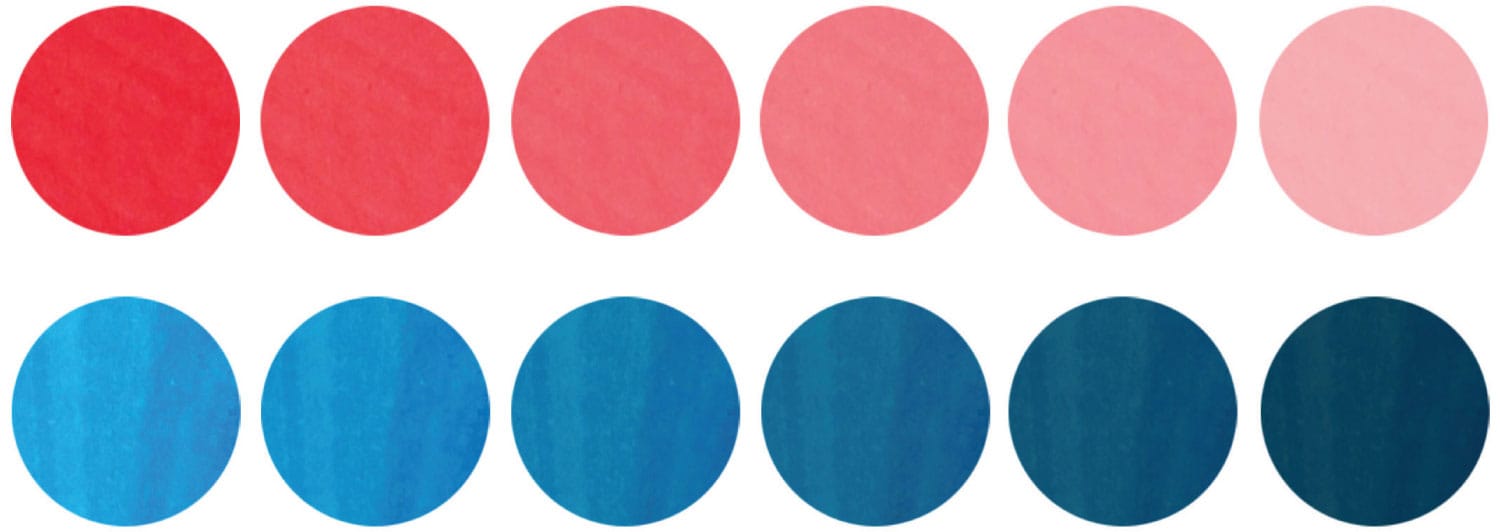COLOR BASICS
If you have kids who enjoy crafting, chances are you probably already own a wide range of colors, whether you and your family like to work with markers, crayons, watercolor, acrylic paints, or something else. There are so many colors out there that it’s impossible to own every single one, however, and you may want to mix and match colors to create different shades. This is where having a basic understanding of color theory will come in handy!
THE COLOR WHEEL
The color wheel has been around for centuries, but it remains the best tool for learning about colors and how they relate to one another. It can also be used as a reference when mixing colors.
At the heart of the color wheel are the three primary colors: red, yellow, and blue. Primary colors cannot be created from other colors. They can, however, be mixed with each other to make any other basic color.

Mix primary colors in equal amounts to create the secondary colors: orange, green, and violet.

Lastly, primary colors can be mixed with secondary colors to create tertiary colors: yellow-orange, red-orange, red-violet, blue-violet, blue-green, and yellow-green.

COLOR TEMPERATURE
Colors are classified as either warm or cool. Warm colors look vivid and energetic and seem to advance in a piece of art, while cool colors are seen as calm and soothing and appear to recede.
TINTS, TONES, AND SHADES
You can lighten, darken, and reduce the saturation of colors by mixing them with neutrals.
To lighten a color, creating a tint, add white until you’ve reached your desired lightness. To darken a color, creating a shade, add black until you’ve reached your desired darkness.

Create a range of tones by adding in small amounts of gray (mix equal parts black and white).
